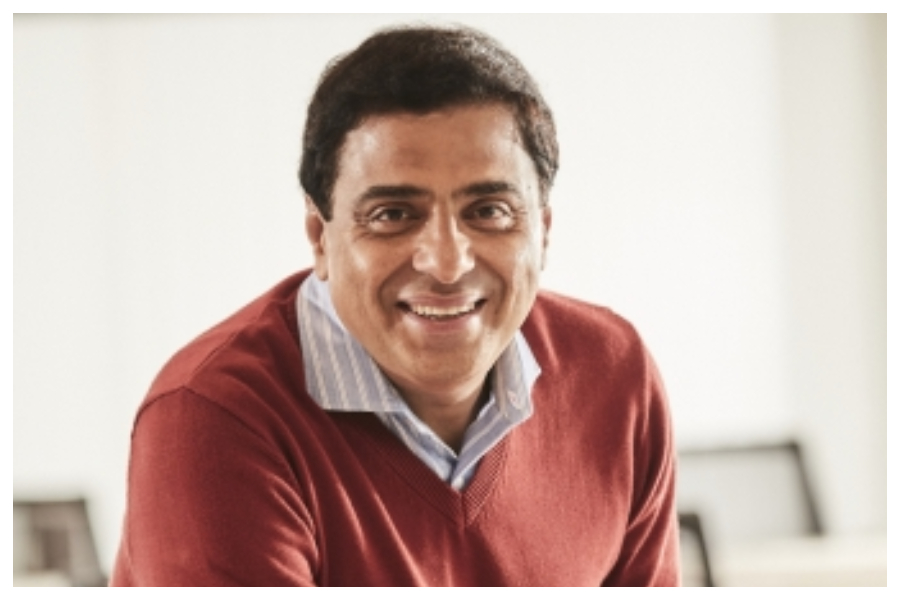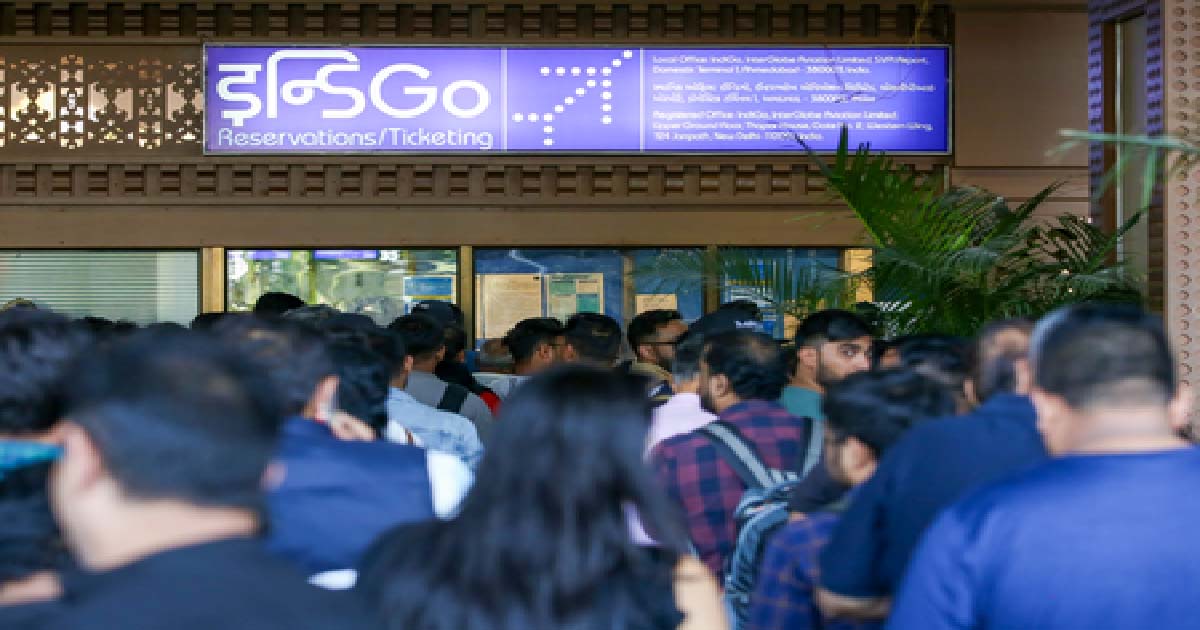Business
Ronnie Screwvala: No funding winter for startups with real business models

There is no funding winter for startups and unicorns with great and real business models and for those building organisations to outlast all others, according to Ronnie Screwvala, Co-Founder and Chairperson of higher education platform upGrad.
In an interaction with Screwvala said that even today, there are investments being closed daily across multiple sectors, as the world faces a great deal of uncertainty over multiple macro-economic factors.
Here are the excerpts from the interview:
Q: How do you look at the current wave of ‘funding winter’ in India?
A: I am always amused to hear this phrase ‘funding winter’, heard it so often in the last 15 years. I always thought only God was responsible for the multiple seasons we enjoy each year but of late, the private equity (PE) investor community is taking that place with their own patent on seasons.
Summer is when you bask in your own self-made glory, excesses and intoxication of hyper valuations, where no one is accountable and everyone is told to make hay while the sun shines.
Monsoon (unique to India) is a realisation that when ‘it rains it pours’ — good or bad.
Then, of course, is Winter, the time to re-write the same 50-page presentation that in summer months said exactly the opposite — the time to reverse the same intoxication of fund raise, valuations and hyper so-called growth with ‘one time’ write downs and blame the whole world, war, inflation and more, that was lurking around the whole summer but no one wanted to put their glasses on.
Seriously though, there is no funding winter for companies with great and real business models and for those building organisations to outlast all others. Even today there are investments being closed daily across multiple sectors — maybe not with the maverick investors who may be.
Let’s face it, the markets have corrected 10-12 per cent, that’s it. Overall, it is still way higher than pre-Covid and if you look, many companies are at their all-time high. This is also the best time for real businesses and mature founders not inflated with valuations to go out there.
Every company worth its value has to go through multiple seasons, over and over again, and the right ones grow and mature from that.
Also in Winter, the most elegant of snow leopards come out to hunt and be predators, and so Winter is the time for those who want to build to outlast and who want to be predators.
Q: The edtech sector is witnessing layoffs. Is this because funding dried up or there is more to it?
A: There is absolutely no ‘dry spell’. Just because a few handful of start-ups got crazily funded, made them lose all focus, pushed to grow and diversify are now being forced by those same investors to wake up and smell the coffee, does not mean there is any dry spell.
They were misguided by themselves and their Board and now are correcting themselves, unfortunately at the cost of valued working colleagues, but they are the exception, not the trend at all.
Never in a 100 years of education and ‘LifeLongLearning’ has there been a more opportune time to disrupt scale and include millions of college learners and working professionals to re-invent, re-skill and get onto a new growth path in their careers. India is also placed brilliantly to open up the higher education market in Asia and around the world.
We, at upGrad, have stayed away from the hubris of distraction and focused on outcomes and impacting careers.
Let there be no mistake, there is no better time than now. K12 went through its Covid bump and it is now seeing much needed correction, but the majority of companies in edtech are just getting started.
Q: How do you look at the global macroeconomic conditions that have engulfed economies the world over?
There were some interesting themes across the three days at the World Economic Forum (WEF) at Davos. Here are some takeaways:
A) Those who were questioning the end of globalisation had not really spent enough time defining what that meant in the first place, before sounding the death knell on it. Globalisation is here to stay as the world consumer wants it that way. An 18-year-old Zayda in Bangladesh wants to own an Apple iPhone and the 22-year-old Amari in Zambia wants to graduate from a UK university.
While the world leaders have in their own way created barriers, through war or threats of war and more insular growth, the seven billion+ people on this planet will not let that happen and globalisation will prevail.
B) There is a reskilling revolution that is happening and will be a tsunami over the next decade across the world. Better education and lifelong learning — accessible and affordable to all — digitally can and will add a massive $8 trillion to the global GDP in this decade. Power shifts in countries will take place based on the workforce and their population being ready for the jobs of tomorrow and also be the learning capitals of the world.
C) India also has the place and the position to be the new voice of global leadership — largest democracy, fastest growing economy and a world leader with clarity, conviction and an agenda to put it at the centre-stage in the world.
D) There is no doubt that the world is going to pass through a very, very challenging time. With food being disproportionately available to countries around the world, the poor will get poorer even if the rich do not get richer. Covid is not leaving the planet in a hurry but has got us all hyper alert on health enough to take notice of even Monkeypox – something that was prevalent in Africa for years but ever since it hit the “western” world.
And the war is not going away in a hurry and it will be interesting to see how engaged the West stays as the war prolongs or will they lose interest if it does not serve their agendas.
The big question we also need to track is how polarised the world will get in the next two-three years. All of this will call for incredible world leaders and leadership in politics and in building business and organisations.
Business
IndiGo offers travel vouchers worth Rs 10,000 to severely impacted customers

New Delhi, Dec 11: Limping back to normalcy, IndiGo on Thursday offered travel vouchers worth Rs 10,000 to customers who were severely impacted during the flight disruption earlier this month.
The airline “regrettably acknowledged” that several people travelling between December 3 and 5 were stranded for many hours at major airports nationwide. The crisis caused thousands of cancellations and delays, keeping passengers in long queues.
“We will offer travel vouchers worth Rs 10,000 to such severely impacted customers. These travel vouchers can be used for any future IndiGo journey for the next 12 months,” an IndiGo spokesperson said in a statement.
The compensation is in addition to the commitment under the existing government guidelines, as per which, IndiGo will provide compensation of Rs 5000 to Rs 10,000, depending on the block time of the flight, to those customers whose flights were cancelled within 24 hours of departure time.
IndiGo also noted that “all necessary refunds for cancelled flights have been initiated”, including bookings through a travel partner platform.
The airline said that it is “committed” to restoring a “safe, smooth, and reliable” experience.
Earlier in the day, IndiGo Chairman Vikram Singh Mehta said that the airline’s Board will bring in external technical experts to work with the management and identify the root causes behind last week’s massive flight disruptions.
He said the experts will help ensure that such large-scale operational failures never happen again.
Meanwhile, the company stated that all destinations in the airline’s network have been fully connected since December 8, and operations have stabilised since December 9.
On December 8, it flew more than 1,750 flights with just one same-day cancellation, and on December 9, it had over 1,800 flights and zero cancellations. Over 1,900 flights took off on December 10, while just two were cancelled on the same day.
On Thursday, IndiGo said it expects “to operate more than 1,950 flights with approximately 300,000 customers”.
Business
Sensex, Nifty turn volatile at open amid US Fed rate cut

Mumbai, Dec 11: Indian stock markets opened on a volatile note on Thursday, swinging between gains and losses even as the US Federal Reserve announced a 25-basis-point rate cut on Wednesday.
The Sensex, which began the day slightly higher, soon slipped into the red and was trading at 84,312 during early trade, down 79 points or 0.09 per cent. The Nifty also erased its early gains and inched down to 25,750, lower by 8 points or 0.03 per cent.
“From a technical standpoint, Nifty holds immediate support at 25,600–25,650, while the 25,850–25,900 zone continues to act as a strong resistance that has repeatedly halted upward momentum,” analysts said.
“A decisive breakout above this resistance band will be essential to re-establish bullish traction. Conversely, a sustained move below the identified support range may extend the ongoing consolidation phase,” they added.
Infosys, Eternal, Tata Steel, Maruti Suzuki, Adani Ports, HCL Tech, SBI, TCS, L&T, and Tech Mahindra were among the early gainers on the Sensex, rising up to 1.1 per cent. However, Titan, Power Grid, Bharti Airtel, NTPC, Asian Paints, ITC, Reliance Industries, Bajaj Finserv, and ICICI Bank dragged the market with mild losses.
In the broader market, the Nifty MidCap index slipped 0.17 per cent, while the Nifty SmallCap index dropped 0.32 per cent.
Among sectors, IT stocks led the gains, with the Nifty IT index rising 0.70 per cent. This was followed by the Nifty PSU Bank index, which was up 0.65 per cent, the Nifty Metal index up 0.4 per cent, and the Nifty Auto index up 0.12 per cent.
On the other hand, FMCG stocks came under pressure, pushing the Nifty FMCG index down by 0.26 per cent.
Analysts said that domestic markets tracked global cues cautiously as investors assessed the impact of the Fed’s latest rate cut on capital flows and economic growth.
Meanwhile, on the flows front, FIIs offloaded equities worth Rs 1,651 crore on December 10, while DIIs recorded net purchases of more than Rs 3,752 crore.
Business
BSE launches 4 new BSE 100 large-cap TMC universe factor indices

New Delhi, Dec 10: The Bombay Stock Exchange’s (BSE) subsidiary BSE Index Service on Wednesday announced the launch of four new factor Indices from the universe of BSE large-cap total market capitalisation (TMC) index with 5 per cent stock level capping.
The newly introduced indices are BSE large-cap 100 momentum 30, BSE large-cap 100 low volatility 30, BSE large-cap 100 enhanced value 30, and BSE large-cap 100 quality 30.
“BSE Index Services Pvt. Ltd., a wholly owned subsidiary of BSE, today announced the launch of 4 new BSE factor indices from the BSE 100 large cap TMC index as the universe with 5 per cent stock level capping,” the exchange said in a press release.
These Indices are Reconstituted Quarterly, have a base value of 1000, and the first value date is June 20, 2005, along with the additional screening for the liquidity profile, the release added.
BSE large-cap 100 Momentum 30 will track the performance of the 30 companies in the BSE 100 large-cap TMC that exhibit the most persistence in their relative performance, based on their momentum scores. Constituents are weighted based on their momentum score.
BSE large-cap 100 Low Volatility 30 will measure the performance of the 30 least volatile companies in the BSE 100 large-cap TMC. Constituents are weighted by their inverse volatility.
BSE large-cap 100 Enhanced Value 30 measures the performance of the 30 companies in the BSE 100 large-cap TMC with the most attractive valuations, based on their value scores. Constituents are weighted based on their value score.
BSE large-cap 100 Quality 30 measures the performance of the 30 companies in the BSE 100 large-cap TMC that exhibit the most persistence in their relative performance, based on their momentum scores. Constituents are weighted based on their momentum score.
“Building on the success of factor launches on the BSE 500 universe earlier in the year, we are pleased to expand our factor family with the launch of four new factor indices, this time on the large-cap universe,” BSE Index Services Pvt. Ltd MD & CEO Ashutosh Singh said.
“These indices, in the same vein as our BSE 500 universe factor family, will be reset on a quarterly basis with the introduction of an innovative score-based only weighting method,” he added.
The index said that these new indices can be used for running passive strategies such as ETFs and Index Funds.
It can also be used for benchmarking of PMS strategies, MF schemes and fund portfolios. Additionally, investors can now access a broader spectrum of market opportunities, further enriching their investment strategies with this latest addition to BSE’s suite of indices.
-

 Crime3 years ago
Crime3 years agoClass 10 student jumps to death in Jaipur
-

 Maharashtra1 year ago
Maharashtra1 year agoMumbai Local Train Update: Central Railway’s New Timetable Comes Into Effect; Check Full List Of Revised Timings & Stations
-

 Maharashtra1 year ago
Maharashtra1 year agoMumbai To Go Toll-Free Tonight! Maharashtra Govt Announces Complete Toll Waiver For Light Motor Vehicles At All 5 Entry Points Of City
-

 Maharashtra1 year ago
Maharashtra1 year agoFalse photo of Imtiaz Jaleel’s rally, exposing the fooling conspiracy
-

 National News1 year ago
National News1 year agoMinistry of Railways rolls out Special Drive 4.0 with focus on digitisation, cleanliness, inclusiveness and grievance redressal
-

 Maharashtra1 year ago
Maharashtra1 year agoMaharashtra Elections 2024: Mumbai Metro & BEST Services Extended Till Midnight On Voting Day
-

 National News1 year ago
National News1 year agoJ&K: 4 Jawans Killed, 28 Injured After Bus Carrying BSF Personnel For Poll Duty Falls Into Gorge In Budgam; Terrifying Visuals Surface
-

 Crime1 year ago
Crime1 year agoBaba Siddique Murder: Mumbai Police Unable To Get Lawrence Bishnoi Custody Due To Home Ministry Order, Says Report












